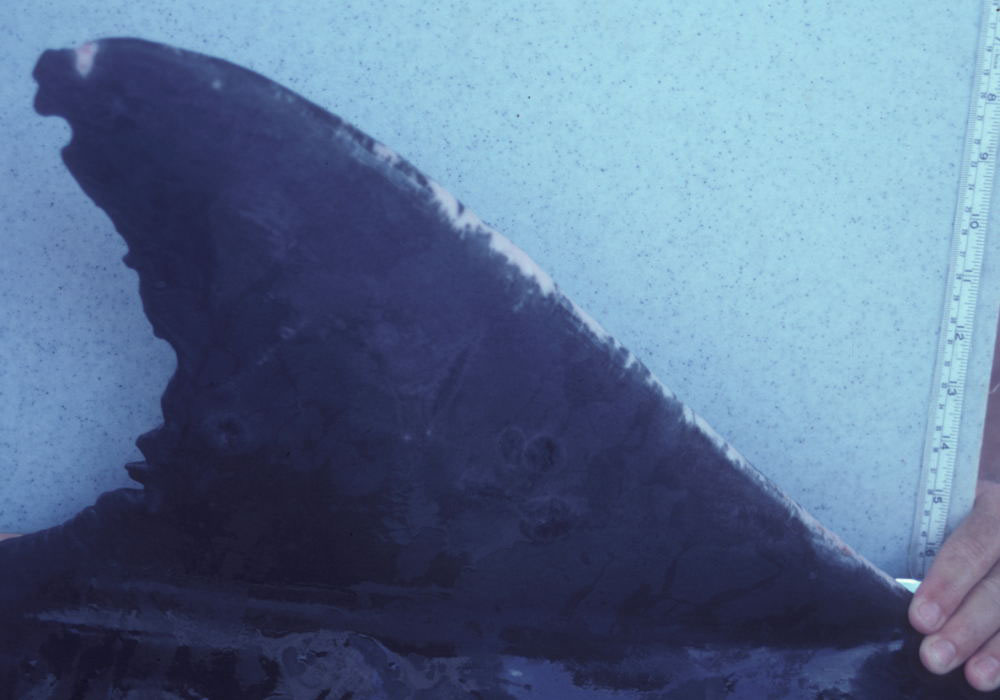Dolphin FB26
Stats
Name: Fb26, also known as Norman
Sex: Male
Age: Born 1957. Disappeared 2001.

A Dolphin’s Life
Norman was the first dolphin we ever tagged in Sarasota, on Oct. 3, 1970. He was seen 246 times, until July 2001. When we first met him, he was with another young adult male, F24A, and he continued to be seen with this male into 1976. They were our first example of a strongly bonded male alliance, a fascinating feature of bottlenose dolphin social systems that was first described for the species in Sarasota Bay — a kind of “wing dolphin” relationship.
Over the course of our observations, Norman was paired with three different males. The most enduring association was with Jimmy Durante, a male who was two years younger.
This pair remained together for 20 years and provided important data for at least two doctoral dissertations that examined male pair behavior — by the SDRP’s Director Randy Wells in 1986 and by Edward Owen in 2003.
Norman and Jimmy Durante remained together until Norman disappeared in 2001. Paternity tests suggest that Norman was in his breeding prime in the mid-80s, siring FB92 and FB93.
We know he lived through the time before some widespread, persistent, highly toxic environmental pollutants, such as PCBs and DDT, were banned. He had accumulated the highest concentrations of these chemicals of any dolphin measured in Sarasota Bay, more than an order of magnitude higher than most other Sarasota Bay males, and we can’t help but wonder whether these high levels of pollutants might have limited his reproductive potential or his lifespan.
Watching Norman over the years allowed us to gain amazing insights in dolphin behavior and health. His was a remarkable life indeed.
A Dolphin’s Voice
A Special Note About the Audio Recording
In collaboration with numerous colleagues over the past 35 years, our dolphin communication research team has collected thousands of hours of acoustic recordings from members of the resident Sarasota bottlenose dolphin community, with a focus on individually distinctive signature whistles. Recordings have been made during periodic health assessments, when we are able to obtain high-quality recordings of known individual dolphins. We are currently in the process of systematically assembling a verified signature whistle catalog, with multiple samples from each of the approximately 1,000 unique recording sessions of almost 300 individual dolphins. Members of this collaborative team, and our student researchers, come from Woods Hole Oceanographic Institution, the University of North Carolina Wilmington, University of St. Andrews, and Hampshire College. Learn more about dolphin communication.




